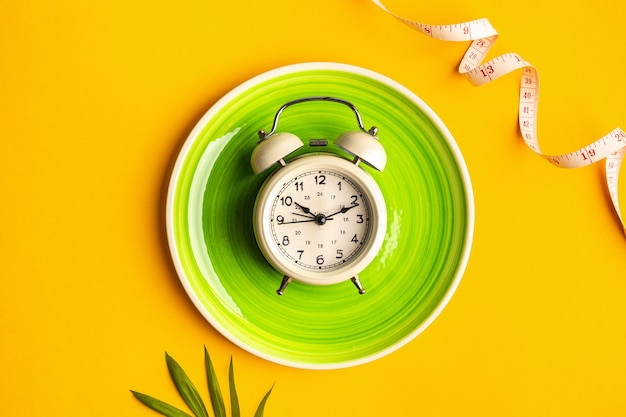
Losing weight is something many people think about daily. It’s not just about shedding pounds—it’s also about understanding what to eat, how much to eat, and when to eat. Taking a thoughtful and measured approach to weight loss is key to achieving healthy, long-lasting results.
Let’s be honest—stepping on the scale isn’t always a fun task. Many of us hope for good news but fear disappointment. Wouldn’t it be nice to feel confident that the next time you weigh yourself, the results will look better? Of course, the internet is full of quick-fix solutions and trendy weight-loss methods, but how safe or effective are they? And can you be sure they won’t cause unintended side effects?
Crash diets often promise rapid results, but they don’t always come with clear warnings about the risks. Sure, you might drop a few pounds in just a few days, but the methods can be extreme and unhealthy. Crash diets tend to focus on fast, superficial changes instead of sustainable habits, which can harm your body in the long run. A more gradual approach to weight loss is not only healthier but also more effective in maintaining the results you achieve.
If you’ve decided to lose weight, the plan is simple: you want to reduce your weight to a healthy level without hurting your body. A combination of a manageable diet and some regular physical activity is usually the best place to start. Gradually building better habits is key, and the changes will begin to show over time.
Here’s a step-by-step guide to help you along the way:
**Keep Track of Your Calories**
Start by creating a calorie chart that tracks the calories in different food groups—carbs, proteins, fats, and more. Use measuring cups or spoons to determine your intake with the help of a food pyramid. Focus on eating more fruits, vegetables, and lean protein while cutting back on processed sugars, unhealthy fats, and oils.
Once you know your caloric needs (based on your BMI and height—online tools can help with that), aim to lose about two pounds per week. To achieve this, you’ll need to create a daily calorie deficit of about 1,000 calories. However, don’t try to make these changes too quickly. Start by cutting 500 calories per day, then gradually increase to 700 calories. Consult a nutritionist for meal plans that fit your goals, and take your time—losing weight too quickly can bring its own health risks.
**Eat Smaller, More Frequent Meals**
Eating several smaller meals throughout the day instead of three large ones helps keep hunger at bay. Large meals can leave you overly full initially, but hungrier later. On the other hand, smaller snacks spread out during the day help maintain steady energy levels and prevent overeating.
If you’re busy, prepare snacks in advance. Keep an apple, a handful of nuts, or healthy bars in your bag to snack on a few hours after breakfast. Focus on high-fiber options like oats, fresh fruits, and beans, which keep you feeling full longer. Fiber-rich foods are particularly helpful, as they not only curb hunger but can also boost weight loss. The principle is simple—sometimes, eating more of the right foods helps you weigh less.
**Boost Your Protein Intake**
Protein is your weight-loss ally. It’s the most filling macronutrient and helps prevent unhealthy snacking. After a workout, for instance, a protein shake or something simple like an apple paired with peanut butter can replenish your body without packing on unnecessary calories. But even if you’re not exercising heavily, adding small amounts of protein to every meal—like peanut butter on fruits or soy chunks in pasta—will give your body the nourishment it needs to burn calories more efficiently. The added bonus? Protein helps you lose weight while preserving muscle mass.
**Treat Yourself Occasionally**
Depriving yourself entirely of treats can lead to frustration. If you haven’t had a dessert in a while, it’s perfectly okay to enjoy a small indulgence every couple of weeks. However, this doesn’t mean falling off your diet entirely. Instead, opt for low-calorie treats like vegetables with a light dip, fruit smoothies, or a small serving of salted popcorn. Moderation is key—savor your treat while staying on track with your overall plan.
**Stay Active**
Not everyone loves the gym, but that’s okay. There are plenty of ways to stay active without formal workouts. Skip the elevator and take the stairs, walk during your breaks at work, or make small movements throughout the day. Even simple actions like drinking more water can help reduce false hunger signals while keeping you hydrated and boosting your metabolism.
**Some Final Reminders:**
– Increase your protein intake.
– Drink plenty of water.
– Eat more fiber.
– Avoid processed foods and sugary snacks.
– Don’t rush weight loss—slow and steady wins the race.
– Focus on smart eating habits, not starvation.
Ultimately, losing weight isn’t just about looking good—it’s about feeling healthy and strong. Building healthy eating and exercise routines can lead to long-term success and greater happiness. Take it one step at a time, and you’ll get there!